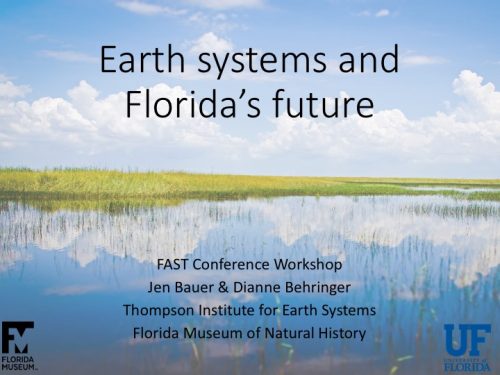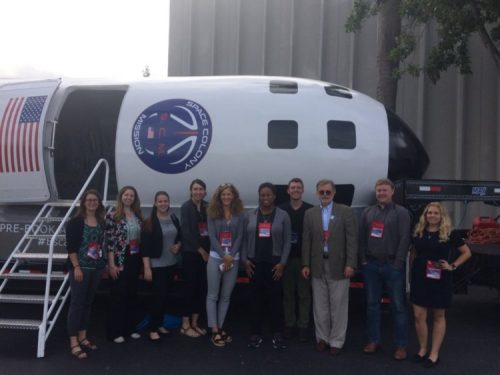
The Thompson Earth Systems Institute team headed to the Florida Association of Science Teachers annual meeting in Miami, Florida. This meeting is where teachers and organizations from all over the state come together to share their experiences, activities, and more. Thompson Earth Systems Institute Director, Dr. Bruce MacFadden met with the Florida Association of Science Supervisors the day before the conference began to announce the presence of the new institute. He took this opportunity to discuss the recently funded Moonshot proposal to get a “Scientist in every Florida School” either virtually or physically. Additionally, we hosted a one-hour workshop on the second day of the conference in collaboration with the education team at the Florida Museum of Natural History.
The goal of the workshop was to provide teachers with background content on the various Earth systems and how they can begin to think about them in the context of Florida. During the presentation, we passed out BINGO cards for teachers to identify key words or phrases during the presentation. When a participant got BINGO, they could say each of the terms and then describe how they are connected in the broader sense of Earth systems. This was remarkably fun and a simple way to get audience participation during the workshop.

The talk began with a direct issue here in Florida – sea level rise. NOAA has a sea level rise viewer where you can simulate what happens in a specific area when sea level rises. I zoomed in to the area directly around where the conference was in Miami, Florida. The simulator starts at 0 and goes up to 6 feet, and unfortunately the average elevation in Florida is only just above 6 feet. I then walked the educators through the four basic spheres (land, life, water, air) of Earth system and how we can think about them and their impacts here in Florida. This included how sea level rises, ocean circulation, erosion and weathering, erosional features, greenhouse gases, and more!
The next portion of the workshop was designated to allow the teachers time to brainstorm ideas for a lesson or activity and to ask questions to content experts (the rest of our lab group and team was there in the room). There were some great activities thought out and we were able to discuss ideas with the teachers for how we can better serve them as an academic institute. Overall, it was a great experience for our team to share more information about Earth’s natural systems and foster discussions with educators.
Click here to look through the entire presentation as a pdf.